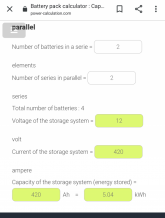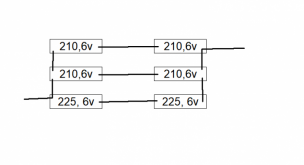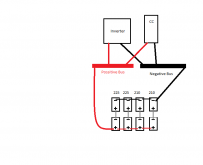I have four 6 volt golf cart batteries set up for a 12 volt RV system 2s2p. I have two Costco batteries in series w/ 210ah (@ 20 hrs) each. Then I have two batteries that I got at a small shop on the road w/ 225ah (@ 20 hrs) each
I'm using the smaller battery 210ah, for all the batteries. I'm thinking make the calculation using the smaller amp hours as the max so that I don't overcharge the smaller 210ah battery and make it boil a lot. I'm getting 420ah and that seems high. I guess the paralleled batteries cancel each other out then its just 210+210 for both series. Unfortunately I got two different batteries bc of the location I was in at the time last May. I posted the internet calculator I used.
I'm thinking I need to balance the batteries once in awhile.
Will the two series 210 and 225 balance at night while not charging?
See pics for my 2s2p in the calculator


I'm using the smaller battery 210ah, for all the batteries. I'm thinking make the calculation using the smaller amp hours as the max so that I don't overcharge the smaller 210ah battery and make it boil a lot. I'm getting 420ah and that seems high. I guess the paralleled batteries cancel each other out then its just 210+210 for both series. Unfortunately I got two different batteries bc of the location I was in at the time last May. I posted the internet calculator I used.
I'm thinking I need to balance the batteries once in awhile.
Will the two series 210 and 225 balance at night while not charging?
See pics for my 2s2p in the calculator


Last edited:





